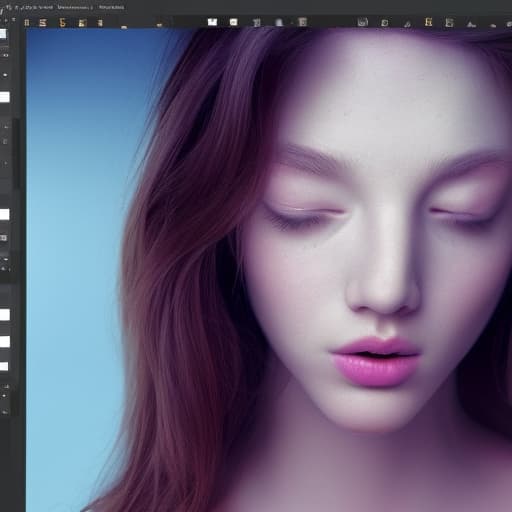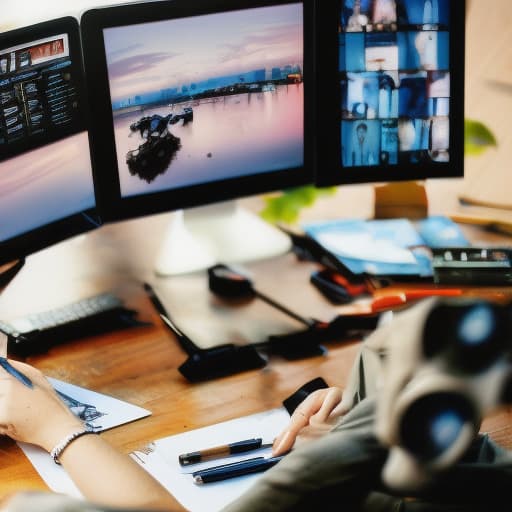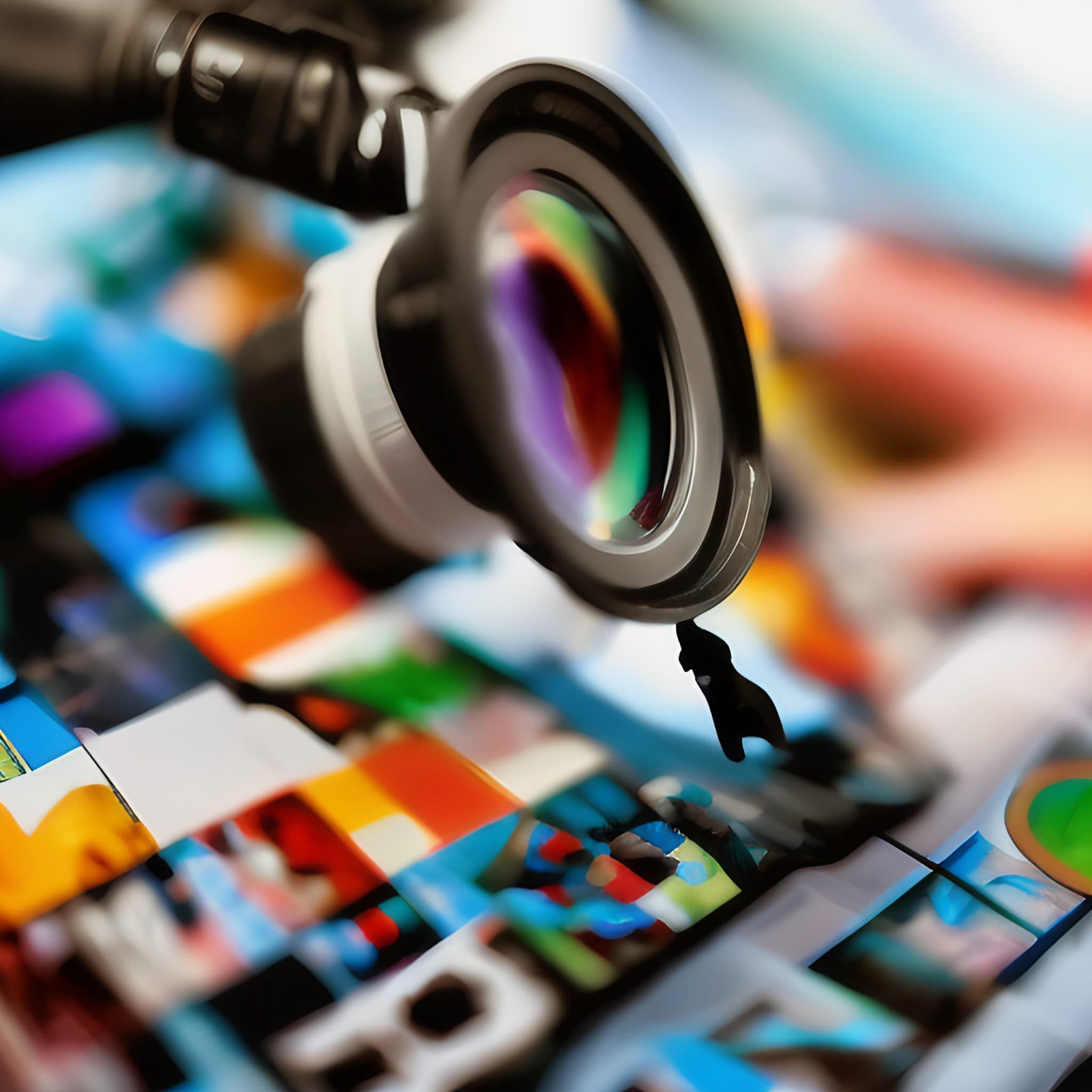Do you have a passion for photography? Are you looking for a way to make money from your hobby? If so, becoming a freelance photo editor may be the perfect opportunity for you! In this blog post, we will discuss the steps that you need to take to become a successful freelance photo editor.
We will also provide tips on how to find clients, become a photo editor, and market your services. So, whether you are just starting or you are looking to take your business to the next level, read on for helpful advice!
Who Is a Photo Editor?
A photo editor is responsible for the visual style and content of a publication. They select and curate the photos that will be used in the magazine or book, and they also oversee the layout and design of the pages.
In some cases, the photo editor may also be responsible for writing text to accompany the images. A photo editor must have a strong understanding of both journalism and graphic design, as they need to be able to tell a story with their photos while also creating an attractive and visually appealing page.
Photo editing skills are also important as they may need to enhance or adjust the colors, contrast, or other elements of the photos to make them look their best. They should also be familiar with various photography techniques such as composition, lighting, and perspective to capture captivating shots. Additionally, knowledge of social media platforms and their algorithms is beneficial in order to optimize the visibility and reach of the photos.

They must also be able to work quickly and efficiently, as they often have strict deadlines to meet. Photo editors are an essential part of any publication, and their work helps to create a unique and engaging experience for readers.
How To Become A Freelance Photo Editor
Becoming a freelance photo editor is a great way to use your creative skills while working from home. Here are ten tips to help you get started:
1. Research The Market
First, take some time to research the market for freelance photo editors. As a freelance photo editor, it’s important to be up-to-date on the latest market trends.
Researching the market helps you understand what kind of services clients are looking for like private photo editors, and how much they’re willing to pay for those photo editing services. It also allows you to see what your competitors are doing and how they’re pricing their services.
By staying informed about market trends, you can make sure that you’re always offering high-quality services at a competitive price. Additionally, research can help you identify new opportunities for expanding your business.
For example, if you notice that more and more businesses are starting to produce video content, you could begin offering video editing services. In short, researching the market is an essential part of running a successful freelance photo editing business.
2. Develop Your Skills
Next, take some time to develop your editing skills. As a freelance photo editor, it is important to have a strong foundation in the basics of photography, photo editing software, and image design. By developing your skills in these areas, you will be able to provide your clients with high-quality results that meet their expectations.
In addition, your photo editing skills will also allow you to work more efficiently and effectively, which can lead to increased earnings. Furthermore, as you develop your skills, you will also be able to take on more challenging photo editing jobs and expand your client base.
As a result, developing your skills as a freelance photo editor is an essential step toward becoming successful in this field.
3. Create A Portfolio
As a freelance photo editor, one of the most important things you can do is create a portfolio that showcases your skills and talents. It can even be an online portfolio. A portfolio helps potential clients see what you can do and what kind of style you have.
It also gives them an idea of your range as an editor, and it can help show off your technical skills in photo editing. In short, a well-crafted portfolio is essential for anyone who wants to be a successful freelance photo editor.
Here are some tips for creating a portfolio that will get you noticed:
- Include a mix of edited photos. Potential clients want to see that you have a variety of editing styles and that you’re able to adapt to different kinds of images. So, make sure to include a mix of black and white photos, color photos, landscape shots, wedding photos, portraits, etc. in your portfolio.
- Choose your best work. Obviously, you want to make sure that you only include your best work in your portfolio. So take some time to carefully select the images that you think show off your skills the best.
- Keep it updated. As you edit new photos, make sure to add them to your portfolio so that it always reflects your latest work. This will show potential clients that you’re constantly honing your skills and expanding your abilities.
By following these tips, you can create a portfolio that will help you stand out from the competition and land the freelance editing jobs you really want!
4. Market Yourself
When you market yourself as a freelance photo editor, you are essentially telling potential clients that you are available for hire. In order to be successful, you need to make sure that your portfolio is up-to-date and that you are showcasing your best work.
You also need to be active on social media, particularly on platforms like Instagram where potential clients are likely to be searching for editors. It is also important to have a strong online presence, so having a website or blog where you can showcase your work is essential.
By taking these steps, you will increase your visibility and make it more likely that potential clients will come to you when they need editing services.
5. Get Organized
The organization of work is key for any freelancer, but it is especially important for freelance photo editors. This is because a photo editor’s workflow is often reliant on receiving images from clients, working with those images, and then sending them back to the client – all within a relatively tight timeline.
If a photo editor is not organized, this process can quickly become chaotic, leading to missed deadlines and unhappy clients. There are a few different ways that a freelance photo editor can get organized.

First, it is important to have an efficient system for receiving and storing images from clients. This might mean setting up a dedicated email address or folder for client submissions or using a cloud-based storage service like Dropbox or Google Drive.
Once images are stored securely, the next step is to create a workflow for editing them. This might involve sorting images into different folders according to their editing needs, or creating presets in editing software so that common tasks can be completed quickly.
Finally, once images are edited, they need to be exported and sent back to the client in the appropriate format. Again, having a streamlined process for doing this will save time and hassle in the long run.
By taking the time to get organized, a freelance photo editor can set himself up for success. Having an efficient system in place for managing client submissions, editing images, and exporting final files will make the whole process easier – and leave more time for creative endeavors.
6. Build Relationships With Clients
When you work as a private photo editor, one of the most important things you can do is build relationships with your clients. These relationships help you in a few different ways.
First, good client relationships lead to repeat business. Your clients are more likely to come back to you if they know that you’re reliable and easy to work with.
Second, happy clients are more likely to refer you to their friends and colleagues. As your network of clients grows, so does your business.

Finally, strong client relationships give you a better understanding of your client’s needs and preferences. This helps you to do your job better and makes it more likely that your clients will be satisfied with your work.
In short, building good relationships with your clients is essential to being successful as a freelance photo editor.
7. Be Flexible With Rates
When you’re starting out as a freelance photo editor, it can be tough to find work. You may not have the portfolio or experience that some of the bigger companies are looking for, but that doesn’t mean you should give up on your dream of becoming a freelancer.
One of the best things you can do is offer flexible rates. This means that you’re willing to negotiate your rate based on the project, the client, and your own level of experience. The following are how flexibility will be beneficial to you:
- By being flexible with your rates, you’re more likely to get work, build your portfolio, and gain the experience you need to succeed as a freelance photo editor. Not only that, but you may also find that you enjoy the freedom and flexibility that comes with being your own boss.
- Flexibility allows you to better tailor your quotes to each individual client’s needs and budget. If you only offer one flat rate, you might miss out on potential clients who are working with a limited budget. However, by offering a range of rates, you can increase the likelihood of landing the job.
- Also, flexibility with rates can help you to negotiate better terms with clients. If a client is asking for a lower rate than what you normally charge, you can use your flexibility to lower your rate somewhat while still making a profit. This can result in a win-win situation for both parties involved.
- Additionally, offering flexible rates can also make it easier to work with new or inexperienced clients who might not be familiar with the industry standard rates. By being flexible, you can help them to understand what they should expect to pay for quality editing services.
If you’re willing to work hard and offer competitive rates, there’s no reason why you can’t achieve your dreams of becoming a successful freelance photo editor.
8. Connect With Other Professionals
As a freelance photo editor, it’s important to build a network of other professionals in your field. Not only will this help you stay up-to-date on industry news and trends, but it can also provide invaluable opportunities for collaboration with another professional photo editor and growth.
For example, connecting with other photo editors can help you land new clients, as well as give you a chance to compare rates and services. Additionally, working with other editors can help you hone your skills and perfect your craft. You can use appointment schedulers for setting networking appointments.
And, of course, building relationships with other editors is simply a great way to make friends and enjoy the camaraderie that comes with shared passions. In short, connecting with other photo editors is an essential part of being a successful photo editor in the industry. So get out there and start networking!
9. Continue Learning
As a freelance photo editor, it’s important to continuously learn and keep up with the latest trends in the industry. This helps you provide the best possible service to your clients and keeps you ahead of the competition.

There are a number of ways to do this, such as taking online courses, reading industry-related articles and books, and attending workshops and seminars. By staying up-to-date with the latest trends, you’ll be able to offer your clients cutting-edge editing services that they won’t be able to find anywhere else.
In turn, this will help you build a strong reputation as a freelance photo editor and attract more business. So if you’re serious about becoming a successful freelance photo editor, make sure to commit to continuous learning. It’s an essential part of the job!
10. Believe In Yourself
Believing in yourself is essential if you want to become a successful freelance photo editor. When you have self-confidence, you’ll be more likely to take risks and seize opportunities.
You’ll also be better able to handle criticism, which is inevitable in any creative field. Most importantly, believing in yourself will give you the stamina to keep going when the going gets tough.
Freelance photo editing can be a tough business, and there will be times when you’ll question your abilities. But if you believe in yourself, you’ll be able to push through the challenging times and come out on top.
So if you’re serious about becoming a freelance photo editor, start by believing in yourself – it’s the first step to success.

FAQs for Becoming a Freelance Photo Editor
What Does a Freelance Photo Editor Do?
What Qualifications Do I Need to Become a Freelance Photo Editor?
How Do I Find Clients as a Freelance Photo Editor?
How Much Money Can I Make as a Freelance Photo Editor?
What Software Do I Need to Become a Freelance Photo Editor?
Is It Possible to Become a Freelance Photo Editor While Working a Full-Time Job?
Conclusion
In conclusion, becoming a successful freelance photo editor takes hard work, dedication, and a willingness to continuously learn and grow. However, if you’re passionate about the craft and are willing to put in the effort, it’s definitely possible.
Related Articles
How To Become A Freelance Software Developer
Is Freelancing Worth It? Freelancing Pros & Cons
How Long Does It Take To Become A Graphic Designer?
How To Become a Freelance Photojournalist
How To Become A Freelance Copywriter With No Experience
How To Become a Freelance Illustrator [Freelance Illustration]



